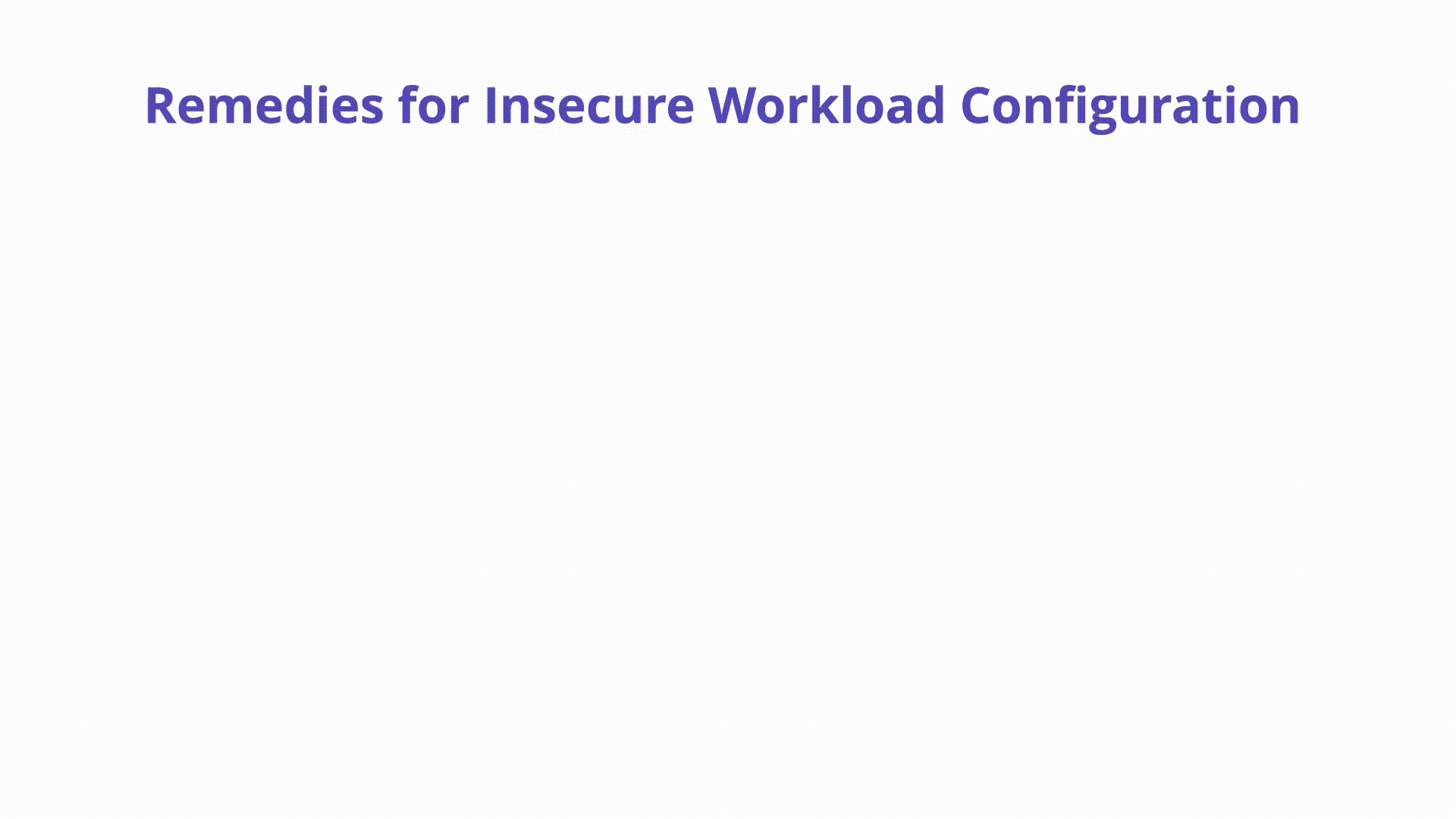K01: Insecure Workload Configurations
Overview
The security context of a workload in Kubernetes is highly configurable which can lead to serious security misconfigurations propagating across an organization’s workloads and clusters. The Kubernetes adoption, security, and market trends report 2022 from Redhat stated that nearly 53% of respondents have experienced a misconfiguration incident in their Kubernetes environments in the last 12 months.

Description
Kubernetes manifests contain many different configurations that can affect the reliability, security, and scalability of a given workload. These configurations should be audited and remediated continuously. Some examples of high-impact manifest configurations are below:
Application processes should not run as root: Running the process inside of
a container as the root user is a common misconfiguration in many clusters.
While root may be an absolute requirement for some workloads, it should be
avoided when possible. If the container were to be compromised, the attacker
would have root-level privileges that allow actions such as starting a malicious
process that otherwise wouldn’t be permitted with other users on the system.
apiVersion: v1
kind: Pod
metadata:
name: root-user
spec:
containers:
...
securityContext:
#root user:
runAsUser: 0
#non-root user:
runAsUser: 5554
Read-only filesystems should be used: In order to limit the impact of a compromised container on a Kubernetes node, it is recommended to utilize read-only filesystems when possible. This prevents a malicious process or application from writing back to the host system. Read-only filesystems are a key component to preventing container breakout.
apiVersion: v1
kind: Pod
metadata:
name: read-only-fs
spec:
containers:
...
securityContext:
#read-only fs explicitly defined
readOnlyRootFilesystem: true
Privileged containers should be disallowed: When setting a container to
privileged within Kubernetes, the container can access additional resources
and kernel capabilities of the host. Workloads running as root combined with
privileged containers can be devastating as the user can get complete access to
the host. This is, however, limited when running as a non-root user. Privileged
containers are dangerous as they remove many of the built-in container isolation
mechanisms entirely.
apiVersion: v1
kind: Pod
metadata:
name: privileged-pod
spec:
containers:
...
securityContext:
#priviliged
privileged: true
#non-privileged
privileged: false
Resource constraints should be enforced: By default, containers run with unbounded compute resources on a Kubernetes cluster. CPU requests and limits can be attributed to individual containers within a pod. If you don’t specify a CPU limit for a container, it means there’s no upper bound on the CPU resources it can consume. While this flexibility can be advantageous, it also poses a risk for potential resource abuse, such as crypto-mining, as the container could potentially utilize all available CPU resources on the hosting node.
apiVersion: v1
kind: Pod
metadata:
name: resource-limit-pod
spec:
containers:
...
resources:
limits:
cpu: "0.5" # 0.5 CPU cores
memory: "512Mi" # 512 Megabytes of memory
requests:
cpu: "0.2" # 0.2 CPU cores
memory: "256Mi" # 256 Megabytes of memory
How to Prevent
Maintaining secure configurations throughout a large, distributed Kubernetes
environment can be a difficult task. While many security configurations are
often set in the securityContext of the manifest itself there are a number of
other misconfigurations that can be detected elsewhere. In order to prevent
misconfigurations, they must first be detected in both runtime and in code. We
can enforce that applications:
- Run as non-root user
- Run as non-privileged mode
- Set AllowPrivilegeEscalation: False to disallow child process from getting more privileges than its parents.
- Set a LimitRange to constrain the resource allocations for each applicable object kind in a namespace.
Tools such as Open Policy Agent can be used as a policy engine to detect these common misconfigurations. The CIS Benchmark for Kubernetes can also be used as a starting point for discovering misconfigurations.

Example Attack Scenarios
TODO
References
CIS Benchmarks for Kubernetes: https://www.cisecurity.org/benchmark/kubernetes
Open Policy Agent: https://github.com/open-policy-agent/opa
Pod Security Standards: https://kubernetes.io/docs/concepts/security/pod-security-standards/